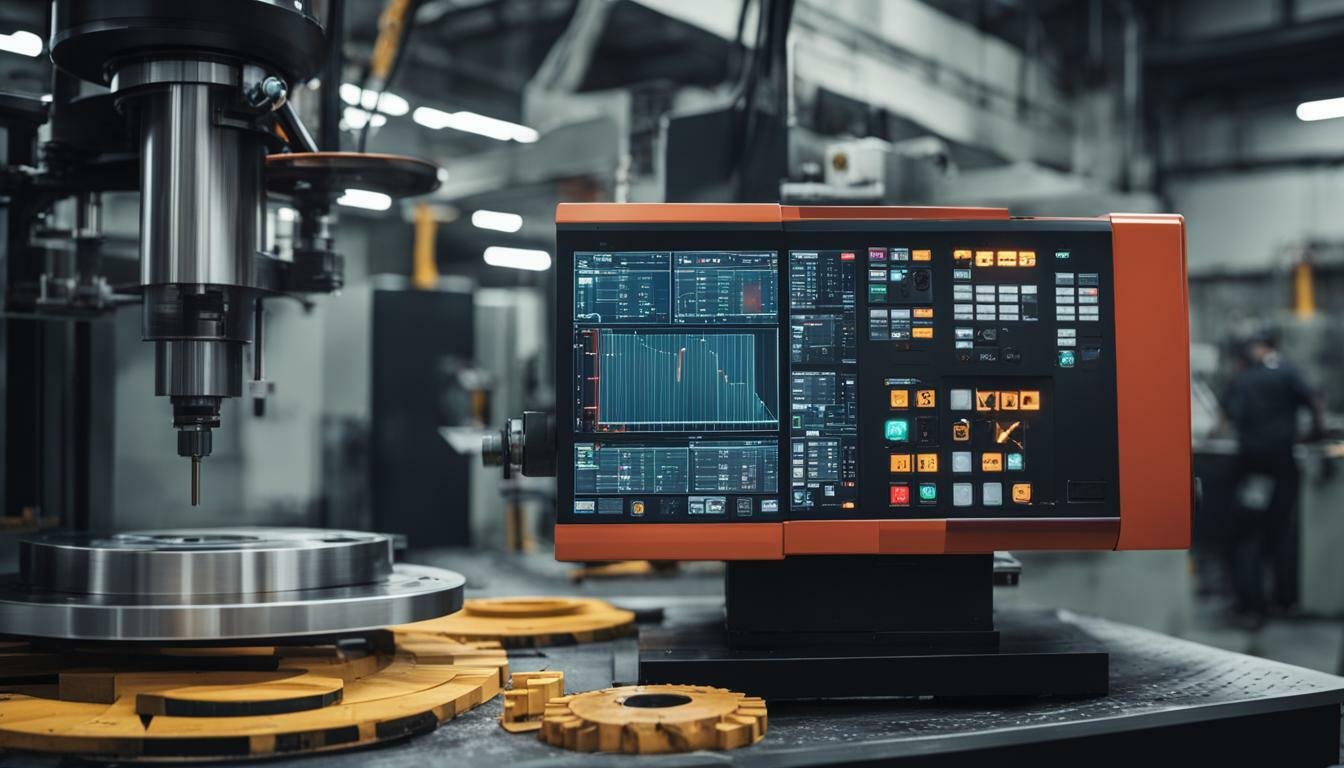If you’re wondering about the cost of CNC turning per hour, you’ve come to the right place. In this section, we will delve into the fascinating world of CNC turning and explore the factors that influence its pricing in the manufacturing industry.
Key Takeaways:
- CNC turning costs per hour can vary depending on factors such as machine size, cutting tolerances, number of axes, and milling time.
- The type of CNC machine and part geometry also play a role in determining the cost per hour for CNC turning services.
- The quantity of parts needed, production cycles, labor costs, tooling, lead time, raw material costs, power usage, and custom CNC machining requirements all contribute to the overall cost.
- On average, 3-axis CNC machining costs around $40 per hour, while 5-axis CNC machining can cost around $200 per hour.
- To reduce CNC milling costs, it is advisable to optimize the design for better material utilization and avoid deep pockets, tight tolerances, and multiple finishes.
Understanding CNC Turning and its Benefits
Before diving into the specifics of pricing, let’s take a moment to understand what CNC turning is and why it is a popular choice in the manufacturing industry. CNC turning is a machining process that involves the use of computer-controlled machines to shape and cut various materials, such as metal or plastic, into precise and complex shapes. The process utilizes rotating tools to remove material from a workpiece, resulting in a finished product with high accuracy and consistency.
CNC turning offers several benefits that make it an ideal choice for many manufacturing projects. Firstly, it allows for increased productivity and efficiency compared to traditional manual turning methods. The automated nature of CNC turning eliminates the need for manual intervention, reducing the risk of errors and improving overall production speed. This not only saves time and costs but also ensures consistent quality throughout the manufacturing process.
Additionally, CNC turning provides manufacturers with the flexibility to produce complex geometries and intricate designs that may be difficult or impossible to achieve through manual methods. The computer-controlled machines can follow precise instructions to create intricate shapes and patterns, enabling the production of unique and customized parts. This makes CNC turning highly suitable for industries such as automotive, aerospace, and medical, where precision and complexity are critical.

- Increased productivity and efficiency
- Consistent quality and accuracy
- Flexibility to produce complex designs
- Reduced risk of errors
- Customization options
As you can see, CNC turning offers numerous advantages that contribute to its popularity in the manufacturing industry. By understanding the benefits of CNC turning, you can better appreciate how pricing factors into the overall value it brings to your projects.
Factors Affecting CNC Turning Hourly Rates
The cost per hour for CNC turning can vary based on several factors that play a significant role in determining the final pricing. Understanding these factors is crucial for estimating costs accurately and optimizing your manufacturing projects. Let’s explore the key aspects that influence CNC turning rates.
Machine Size and Cutting Tolerances
The size of the CNC machine used and the desired cutting tolerances are vital factors that affect the hourly rate for CNC turning services. Larger machines with advanced capabilities tend to have higher operating costs, resulting in increased hourly rates. Furthermore, projects that require tight tolerances may involve additional setup time and meticulous attention to detail, leading to higher prices.
Number of Axes and Milling Time
Another element that influences the cost per hour of CNC turning is the number of axes and the milling time required for a specific project. Complex projects that require more axes for multi-directional cutting may incur higher costs due to increased equipment complexity and setup time. Additionally, longer milling times can contribute to higher hourly rates.
Type of CNC Machine and Part Geometry
The type of CNC machine utilized and the complexity of the part geometry being produced can significantly impact the cost per hour for CNC turning services. Specialized machines designed for intricate operations or unique geometries often come with higher maintenance and operating costs, resulting in higher hourly rates. Moreover, intricate part geometries may require additional setup time and expertise, contributing to increased prices.
| Type of CNC Machine | Hourly Rate (Estimated) |
|---|---|
| 3-Axis | $40 |
| 5-Axis | $200 |
Table: Estimated hourly rates for 3-axis and 5-axis CNC machining.
It’s important to note that these rates are rough estimates and can vary depending on the specific service provider, location, and project requirements. Consulting with a CNC turning expert or using a cost calculator can provide more accurate pricing information for your specific needs.
Optimizing your designs for CNC turning can help reduce costs. Avoiding deep pockets, reducing tight tolerances where possible, minimizing the need for multiple finishes, and optimizing part geometry for better material utilization can lead to significant cost savings without compromising quality.

Machine Size and Cutting Tolerances
The size of the CNC machine and the cutting tolerances you require can greatly impact the hourly rate for CNC turning services. Larger machines tend to have higher operating costs, which can result in higher hourly rates. Additionally, machines with tighter cutting tolerances may require more precise tooling and setup, increasing the complexity and cost of the machining process.
When determining the machine size and cutting tolerances for your project, it is important to consider the specific requirements of your parts. While larger machines may offer higher production capacities, they may not be necessary for smaller or less complex components. Similarly, if your parts do not require extremely tight tolerances, opting for looser tolerances can help reduce costs without compromising the functionality of the final product.
It is essential to communicate your machine size and cutting tolerance requirements clearly with your CNC turning service provider. By working closely together, you can ensure that your project is completed efficiently and within budget.
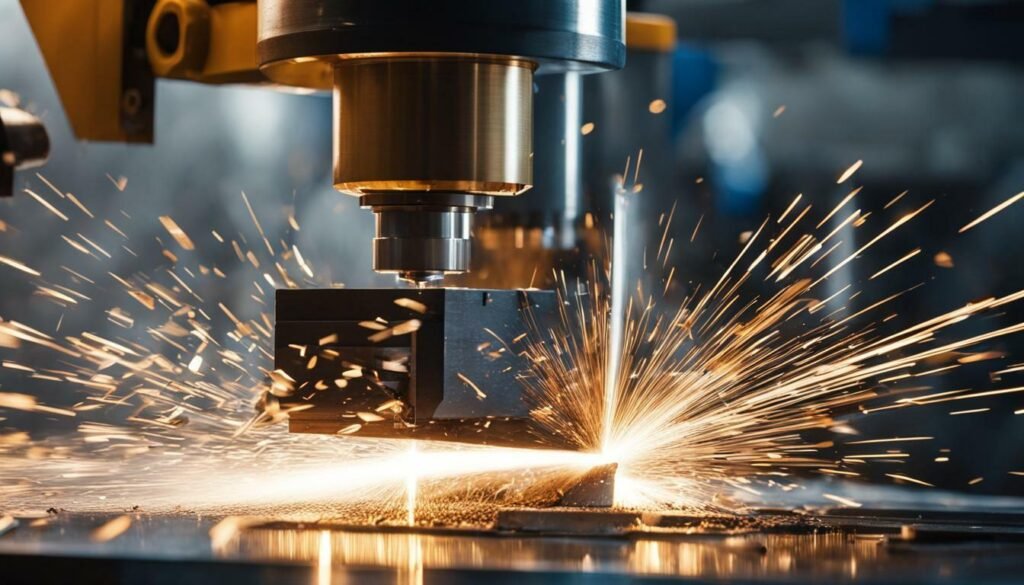
| Aspect | 3-Axis CNC Machining | 5-Axis CNC Machining |
|---|---|---|
| Hourly Rate | $40 | $200 |
Number of Axes and Milling Time
The complexity of your project, determined by the number of axes and milling time required, can affect the overall cost per hour for CNC turning. Projects that require a higher number of axes or longer milling time may incur additional expenses due to increased machine complexity and longer production time.
The number of axes refers to the number of directions in which the CNC machine can move and operate simultaneously. A higher number of axes allows for more intricate and precise machining operations, but it also requires more advanced machinery and skilled operators, leading to higher costs.
Milling time is another important factor to consider. The more time it takes to complete a project, the more it will contribute to the overall cost per hour. Complex or intricate designs that require longer milling time may require specialized equipment or additional setup, resulting in higher expenses.
To give you a better idea of how the number of axes and milling time can impact costs, take a look at the table below:
| Number of Axes | Milling Time | Cost per Hour |
|---|---|---|
| 3-axis | Short to moderate | $40 |
| 5-axis | Long | $200 |
As you can see, 3-axis CNC machining typically costs around $40 per hour, while 5-axis CNC machining can cost approximately $200 per hour. The increased complexity and longer milling time associated with 5-axis machining contribute to the higher cost.
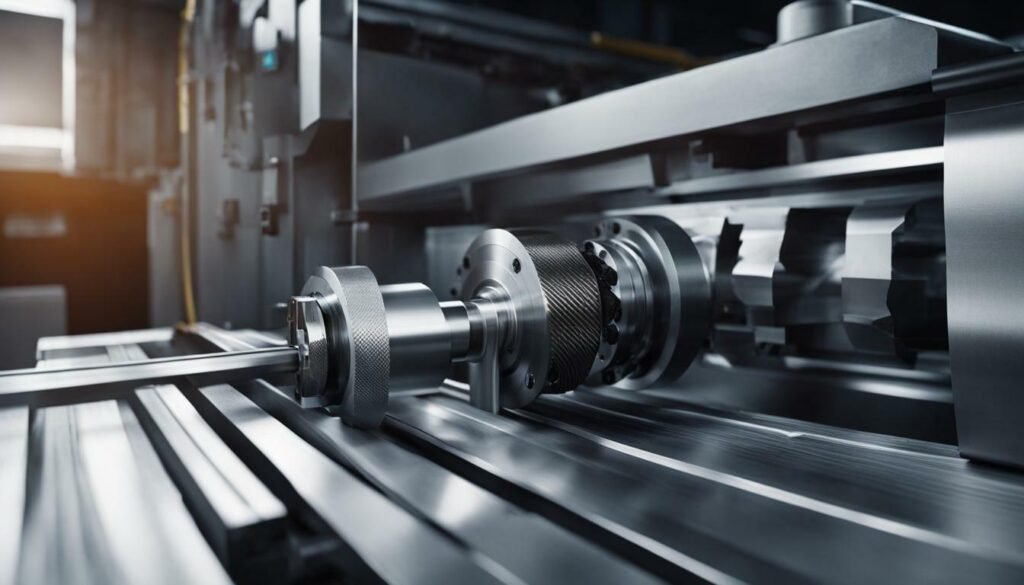
To optimize your CNC turning costs, consider designing your parts and products with efficiency in mind. Minimizing the number of axes required and reducing milling time can help lower expenses. Additionally, working closely with your CNC machining provider and discussing your project requirements can lead to valuable insights and cost-saving recommendations.
- Keep designs as simple as possible, avoiding unnecessary complexity.
- Optimize part geometry to reduce the number of machining operations.
- Consider batch production to minimize setup time and maximize efficiency.
By considering these factors and working collaboratively with your CNC machining provider, you can optimize the number of axes and milling time for your projects, ultimately reducing the overall cost per hour for CNC turning services.
Type of CNC Machine and Part Geometry
The type of CNC machine and the complexity of the part geometry can influence the cost per hour for CNC turning. Different types of CNC machines are designed for specific purposes, and their capabilities and features can affect the overall pricing. For example, a 3-axis CNC machine is commonly used for simpler parts and is typically more affordable, with an average cost per hour of around $40. On the other hand, a 5-axis CNC machine offers greater flexibility and precision, making it suitable for complex parts. However, the increased capabilities come at a higher price, with an average cost per hour of around $200 for 5-axis CNC machining.
The complexity of the part geometry is another factor that can impact the cost per hour. Intricate designs with intricate shapes, contours, and tight tolerances often require more time and expertise to program and machine. As a result, the cost per hour may increase to account for the additional complexity and precision required. It is important to note that the type of CNC machine and part geometry are interrelated, as certain machines may be better suited for specific part geometries. Collaborating with an experienced CNC turning service provider can help determine the most cost-effective approach for your specific needs.
Table 1: Comparison of CNC Machine Types and Their Hourly Rates
| CNC Machine Type | Hourly Rate (Average) |
|---|---|
| 3-axis CNC machine | $40 |
| 5-axis CNC machine | $200 |
When considering CNC turning costs, it is essential to evaluate the type of CNC machine and the complexity of the part geometry. Balancing the desired precision and complexity with your budget can help optimize the cost-effectiveness of your manufacturing projects.
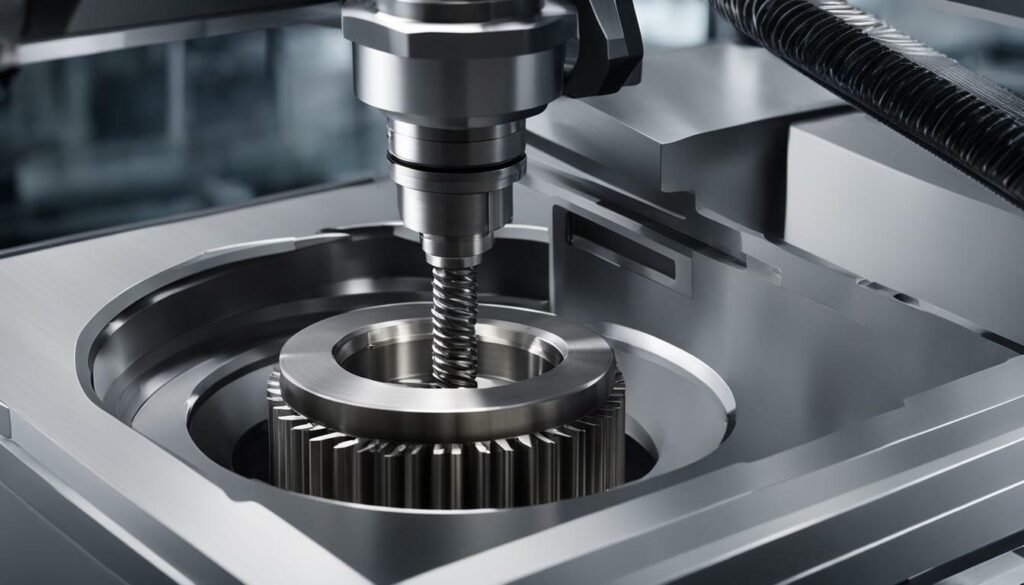
Image: The image above illustrates the importance of choosing the right CNC machine type and understanding the complexities of the part geometry to optimize the cost per hour for CNC turning.
Quantity of Parts and Production Cycles
The quantity of parts you require and the production cycles necessary can affect the total cost per hour for CNC turning services. When it comes to quantity, producing a larger volume of parts generally leads to lower costs per unit, as the setup and overhead costs can be spread across a greater number of pieces. This is particularly beneficial for long-term production runs where economies of scale can be achieved.
On the other hand, if you only need a small batch of parts, the cost per unit may be higher due to the setup and tooling expenses being proportionally distributed across fewer pieces. Additionally, shorter production cycles with quick turnaround times may result in higher hourly rates to accommodate the urgency and prioritization of your project.
It is important to carefully analyze your production requirements and work closely with your CNC turning service provider to determine the most cost-effective approach based on your specific needs. By understanding the impact of quantity and production cycles on pricing, you can make informed decisions and optimize your manufacturing budget.
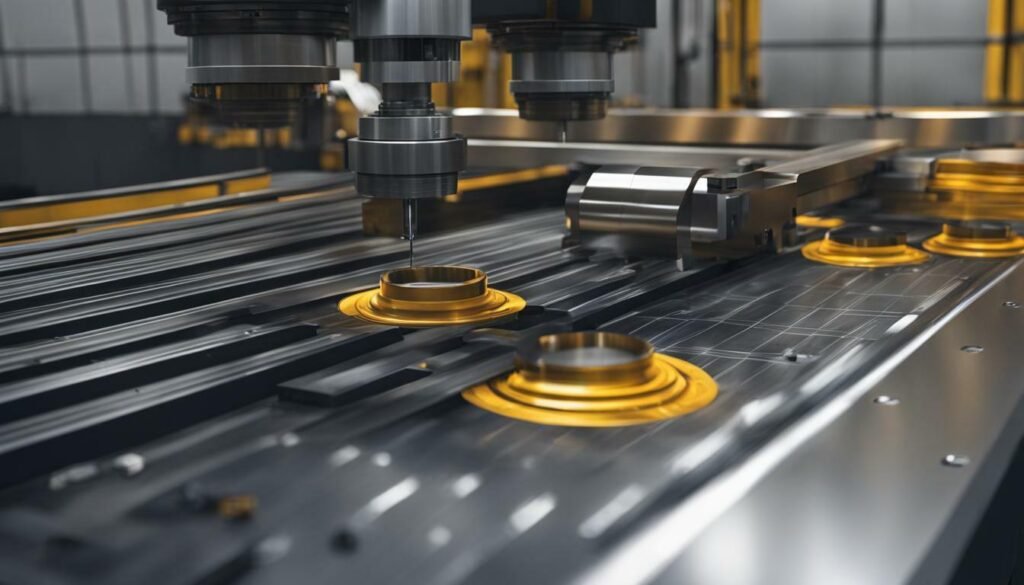
For a clearer understanding of how quantity and production cycles can influence CNC turning costs, here is an example table showcasing different scenarios:
| Scenario | Quantity | Production Cycle | Cost per Hour | Total Cost |
|---|---|---|---|---|
| A | 100 | 2 weeks | $50 | $20,000 |
| B | 500 | 4 weeks | $45 | $90,000 |
| C | 1,000 | 6 weeks | $40 | $240,000 |
As you can see from the table, as the quantity increases and the production cycles extend, the cost per hour decreases, resulting in lower total costs. However, it is important to note that each project is unique, and pricing may vary depending on the complexity of the parts, material requirements, and other factors.
Labor Costs and Tooling
Labor costs and tooling expenses are essential factors to consider when determining the cost per hour for CNC turning. While labor costs can vary depending on the location and expertise of the workforce, tooling expenses are primarily associated with the purchase, maintenance, and replacement of cutting tools used in the CNC turning process.
Experienced and skilled labor is crucial for efficient CNC turning operations. Highly trained operators can optimize the machining process, ensuring faster production times and minimizing errors. However, the cost of hiring skilled labor can be higher, contributing to the overall cost per hour for CNC turning services.
Tooling expenses also play a significant role in determining the cost. Cutting tools, such as inserts and end mills, undergo wear and tear during the machining process and need regular maintenance or replacement. The quality and durability of the tools used can impact their lifespan and, consequently, the overall tooling expenses.
To reduce labor costs and tooling expenses, it is advisable to optimize the machining parameters, such as feed rates and cutting speeds, to minimize tool wear. Additionally, proper maintenance and regular inspections of the machines and cutting tools can help identify potential issues early on, preventing costly breakdowns or production delays.
| Key Points: |
|---|
| • Labor costs and tooling expenses are essential factors to consider when determining the cost per hour for CNC turning. |
| • Skilled labor can contribute to faster production times and minimize errors, but it may come at a higher cost. |
| • Tooling expenses include the purchase, maintenance, and replacement of cutting tools used in CNC turning operations. |
| • Optimizing machining parameters and regular maintenance can help reduce labor costs and tooling expenses in CNC turning. |
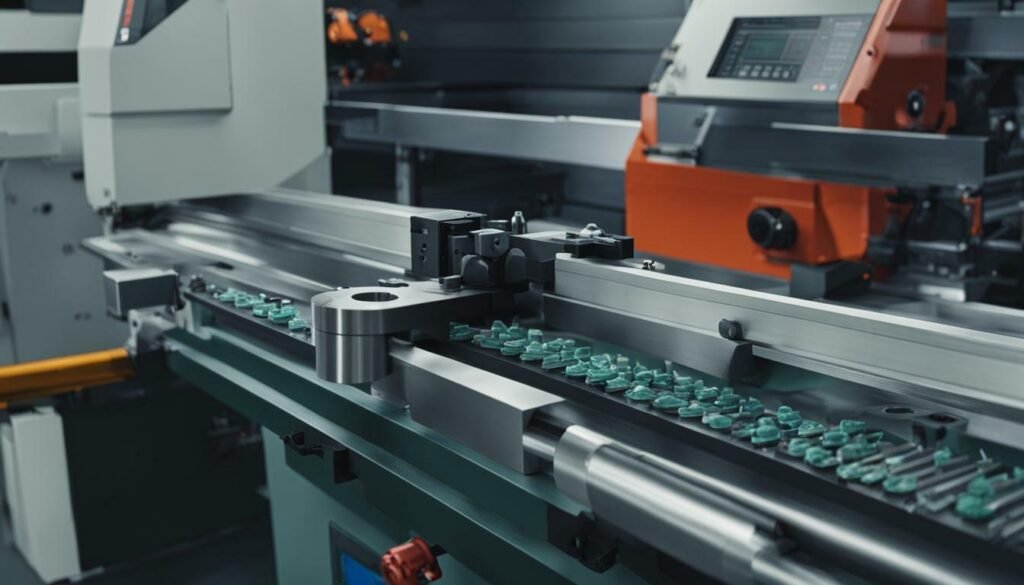
Lead Time and Raw Material Costs
Lead time and raw material costs are crucial considerations that can impact the total cost per hour for CNC turning. The lead time refers to the time it takes from submitting a manufacturing order to receiving the finished parts. A shorter lead time often comes at a higher cost due to expedited production and delivery processes.
Additionally, the choice of raw materials plays a significant role in determining the overall cost. Different materials have varying costs and availability, which can impact the final price per hour for CNC turning. For example, exotic materials or those with specific properties may be more expensive.
To illustrate the impact of lead time and raw material costs, consider the following hypothetical scenario:
| Scenario | Lead Time | Raw Material | Cost per Hour |
|---|---|---|---|
| Scenario A | 2 weeks | Aluminum | $50 |
| Scenario B | 1 week | Titanium | $80 |
In this example, Scenario B has a shorter lead time and requires more expensive raw material, resulting in a higher cost per hour for CNC turning. By understanding the impact of lead time and raw material selection, manufacturers can make informed decisions to optimize cost-efficiency without compromising on quality.
Power Usage and Custom CNC Machining Requirements
Power usage and custom CNC machining requirements can affect the pricing of CNC turning services, and we’ll provide insights on cost comparison. When it comes to power usage, different CNC machines have varying energy consumption rates. Some machines may require more power to operate, which can result in higher costs per hour. It’s important to consider the power requirements of your specific project and factor them into the overall pricing.
Additionally, custom CNC machining requirements can also impact the cost of turning services. Custom projects often require specialized tooling, programming, and setup, which can increase the hourly rate. These unique requirements may involve additional time and resources, driving up the overall cost. It’s crucial to communicate your custom needs to the CNC turning service provider so they can provide an accurate pricing estimate.
In order to make an informed decision and compare costs, it’s recommended to gather quotes from multiple CNC turning service providers. This allows you to compare their pricing structures, including any additional charges for power usage and custom machining requirements. By comparing quotes and understanding the factors that contribute to the pricing, you can choose the most cost-effective option that meets your specific project needs.
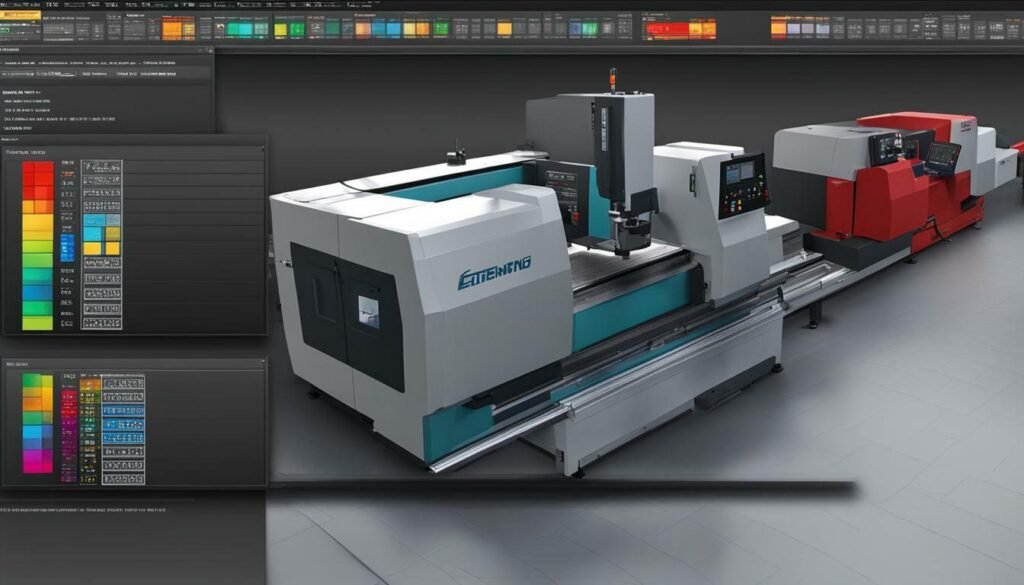
When considering power usage and custom CNC machining requirements, it’s essential to understand their impact on the overall cost per hour. By analyzing these factors and conducting a thorough cost comparison, you can ensure that you’re getting the best value for your investment in CNC turning services.
Conclusion
Understanding the cost of CNC turning per hour is essential for making informed decisions in your manufacturing projects. The price per hour for CNC turning services can vary depending on a range of factors. Machine size, cutting tolerances, number of axes, milling time, type of CNC machine, part geometry, quantity of parts, production cycles, labor costs, tooling, lead time, raw material costs, power usage, and custom CNC machining requirements all play a role in determining the overall cost.
On average, the cost per hour for 3-axis CNC machining is around $40, while 5-axis CNC machining can cost around $200 per hour. It is important to note that these figures are just averages and can vary depending on the specific project requirements and the manufacturing service provider.
To reduce CNC turning costs, there are a few strategies you can employ. Firstly, avoiding deep pockets in your design can help minimize the amount of material that needs to be removed, resulting in shorter machining times and lower costs. Additionally, reducing tight tolerances and avoiding the need for multiple finishes can help streamline the CNC turning process.
Optimizing your design for better material utilization is another effective way to reduce CNC turning costs. By minimizing waste and maximizing the use of raw materials, you can achieve cost savings. It is also worth considering the design complexity and the impact it may have on machining time and tooling requirements.
In conclusion, understanding the various factors that influence the cost of CNC turning per hour is crucial for budgeting and optimizing your manufacturing projects. By considering machine size, cutting tolerances, number of axes, milling time, type of CNC machine, part geometry, quantity of parts, production cycles, labor costs, tooling, lead time, raw material costs, power usage, and custom CNC machining requirements, you can make informed decisions and achieve cost-effective results.
FAQ
How much does CNC turning cost per hour?
CNC turning costs per hour can vary depending on various factors such as machine size, cutting tolerances, number of axes, milling time, type of CNC machine, part geometry, quantity of parts, production cycles, labor costs, tooling, lead time, raw material costs, power usage, and custom CNC machining requirements. On average, the cost per hour for 3-axis CNC machining is around $40, while 5-axis CNC machining can cost around $200 per hour.
How can I reduce CNC turning costs?
To reduce CNC turning costs, it is advisable to avoid deep pockets, reduce tight tolerances, avoid multiple finishes, and optimize the design for better material utilization.
What Factors Make Turning Cheaper Than Milling in CNC Machining?
When conducting a turning vs milling cost comparison in CNC machining, several factors come into play. The type of material being worked on, production volume, and complexity of the design can greatly impact the overall cost. Turning processes tend to be faster, require fewer tooling changes, and use less energy, making it a more cost-effective option for certain applications. However, for intricate designs or projects involving harder materials, milling might be the more economical choice. Ultimately, a thorough evaluation of these factors is essential to determine whether turning or milling is the cheaper option.
